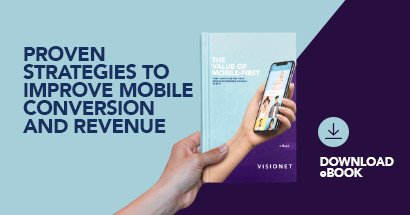
Listen to this blog
What challenges do fashion retailers face as they embrace omni-channel operations? Discover technologies for easier unified commerce deployment.
Since mobile Internet access became commonplace, customers have displayed the tendency to engage brands and make purchases through multiple channels, while expecting a consistent shopping experience. Differences in pricing, order fulfilment procedures, contacting customer service, and other aspects of the customer journey tend to detract from their ideal shopping experience, leading to lower customer satisfaction, decreased brand loyalty, and ultimately, sub-par sales revenue.
These factors are especially important for fashion and apparel retailers. Similar to other “experience goods” such as perfumes and footwear, the apparel shopper usually prefers to interact with products on a direct, physical level, which increases the likelihood that they will visit a brick-and-mortar store. In order to maximize the customer’s opportunities to complete the purchase, leading fashion retailers offer them multiple shopping channels. If the customer doesn’t buy the item at that retail location, they might wait until they get home and buy it over the phone or through the brand’s online store, or use a mobile app to buy the product while they’re on the go.
The Importance of Seamless Customer Experience
Offering customers multiple paths for their purchases is essential, but it isn’t enough to cement the reputation of your brand. Customers will express frustration if item pricing or availability differs depending on which sales channel they choose, and this usually results in lost sales. This is precisely why omni-channel retail is not a fleeting industry trend or empty buzzword – it is swiftly becoming the norm for all successful retail brands.
Omni-channel retail is a seamless approach to the consumer experience through all available shopping channels. Multi-channel businesses engage customers through several independent channels, while cross-channel retail presents channels as a single brand and single view, but with differences in brand experience. On the other hand, omni-channel retail offers customers a uniform brand experience over every shopping channel. While many retailers have successfully transitioned from single-channel to multi-channel setups, and have even graduated to cross-channel retail, relatively few have successfully implemented a truly omni-channel customer experience.
Why is that? What challenges do businesses face that prevent them from a smooth transition to genuine omni-channel operations? Even though it’s true that every business is unique, with its own series of challenges to overcome, the most common hurdle on the road to omni-channel success is legacy technology and information silos.

![]()
The Problem with Multi-Channel Data Silos
Many organizations start with a single-channel retail setup, and gradually add more sales channels as they grow. Because of advances in information technology, newer channels often use newer information systems instead of the ones deployed for existing channels. The biggest problem with this approach is that the customer, product, and transaction information in each channel can’t be shared with any of the others.
So when Betty Walker buys a plaid skirt via your online store on June 12, neither your brick-and-mortar stores nor your call centers are notified about the transaction. You are forced to either tally and adjust stock levels manually on a daily or weekly basis, or keep entirely separate inventories… and neither of those solutions is satisfactory. Furthermore, if Betty decides to shop for other items on her smartphone on June 15, the information system for your mobile channel might not have any record of her previous purchase, leading to a missed opportunity to recommend a product similar to her last purchase. As a matter of fact, your mobile channel might not have any record of a Betty Walker at all! In that case, Betty might be asked to register for a separate mobile account, an annoyance that will probably discourage her enough to abandon the transaction completely.
The example above illustrates just some of the pitfalls of relying on a patchwork of disparate technologies that manage sales channels independently of each other. An omni-channel retail setup would instead use a centralized data repository for all customers, products, and transactions, irrespective of sales channel. That way, shoppers can buy your products over the phone and return them using a mobile app, or order a product from your website and pick it up in-store. Each customer’s transactions would form a single, comprehensive transaction history, making it a simple matter to analyze buying behavior, gauge customer loyalty, and recommend appropriate purchases in the future. A single user account would grant each customer access to your online store via both traditional web browser and smartphone app, which would offer them the same, familiar, full-featured customer experience on both platforms.
Optimized Supply Chain
In addition to a vastly improved customer experience, omni-channel retail streamlines your supply chain operations immensely. Instead of separate, inconsistent records for each channel, or even entirely separate inventories, omni-channel retailers benefit from a single, accurate, real-time view of their entire supply chain. Each in-store, over-the-phone, and online transaction updates your records as they happen, allowing you to respond quickly to significant trends in purchases, returns, or other behavior. Slow, error-prone, and expensive manual transcription and data entry is eliminated as well, which greatly improves data accuracy and reduces operating costs.
Streamlined IT
Your IT department also stands to benefit from well-implemented omni-channel retail. Maintaining a single data repository eliminates the need for multiple legacy information systems, so there are fewer server computers to maintain and purchase software licenses for. To achieve even lower ownership costs, many companies are adopting cloud technologies like Microsoft Dynamics 365. Cloud platforms like Dynamics don’t require on-site server computers, use software and licensing that stays up-to-date automatically, can be accessed securely from multiple devices and locations, and can usually be purchased as cost-effective per-user, per-month subscriptions.
Predictive Analytics
Lower IT costs aren’t the only data-related benefit of going omni-channel. Unified commerce solutions bring all of your business data together, which becomes an extremely powerful diagnostic and predictive tool. Advanced Business Intelligence and Analytics tools track and measure your sales, inventory, and customer data, and give you a detailed picture of your successes and opportunities for growth. Their forecasting capabilities help you assess potential business strategies before you execute them, and make it easier to detect subtle industry trends that you might overlook unaided.
The Transition
Moving to a pure omni-channel infrastructure might seem like a complicated proposition, but it doesn’t have to be. There are a number of tools and technologies that allow a smooth and speedy transition from legacy platforms to unified commerce solutions. Some provide connectors that integrate your existing e-commerce setup to modern cloud platforms, and keep both synchronized automatically, securely, and without causing disruption or downtime.
Conclusion
In order to implement true omni-channel retail that avoids unnecessary complexities, a comprehensive ERP solution is essential. Cloud ERP platforms should be preferred, given their quick, easy deployment, cost-effectiveness, and essentially maintenance-free nature. Instead of scrapping your existing e-commerce implementation, pre-packaged integration solutions offer a much simpler way to automatically synchronize your sales channels’ current technologies with a centralized ERP platform. Powerful predictive analytics technologies can then take full advantage of your customer and product data by generating vital insights that drive business growth.
Visionet Systems offers solutions and services that have helped many retail fashion and apparel businesses of all sizes achieve true omni-channel performance. To find out how we can help your organization attain omni-channel success, please contact Visionet Systems today.




